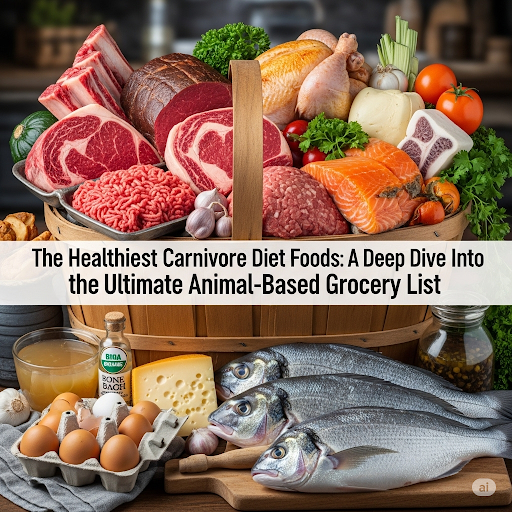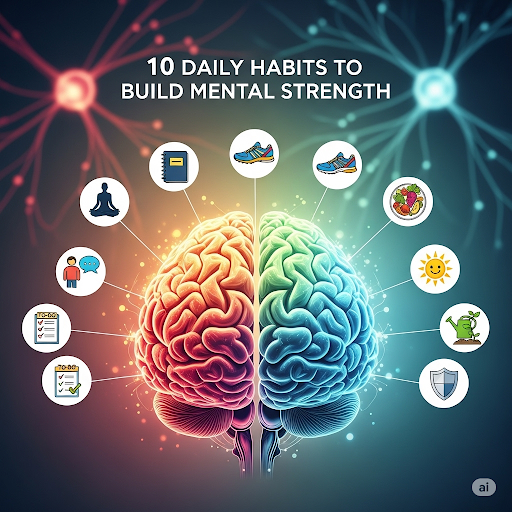If nature made it, and it had a face or fins, it probably belongs in your cart.
We live in a world obsessed with food labels. “Low-fat.” “Keto-friendly.” “Gluten-free.” “Plant-based.” But what if just what if the healthiest thing you could do for your body was to stop overanalyzing every grain and green, and just return to the foods we’ve eaten for millennia?
Enter the Carnivore Diet, an eating style so stripped-down, so primal, that it’s basically the nutritional equivalent of going off the grid. No grains. No fruit. No vegetables. No nuts, seeds, or legumes. Just meat. Animal fats. Organs. Maybe eggs. Possibly dairy if your body gives it a nod.
And while that might sound extreme, the results people are seeing are anything but. More energy. Reduced inflammation. Sharper mental clarity. Hormonal balance. Autoimmune relief. The carnivore lifestyle has gone from fringe experiment to serious nutritional strategy and now, more than ever, people are looking for not just meat, but the right meat.
So, let’s break down the healthiest foods you can eat on a carnivore diet with zero fluff, maximum nutrition, and all the juicy detail you need.
Ruminant Red Meats: The Heart and Soul of the Carnivore Diet
If the carnivore diet had royalty, ruminant meats would wear the crown. Think beef, lamb, bison, elk, venison, and goat. These animals have multiple stomachs (rumens) that allow them to ferment plant matter, extract an insane array of nutrients, and pass that nutrition straight into their muscle tissue and eventually, into your skillet.
Beef is the king here, especially if you focus on fattier cuts. Ribeye, short ribs, chuck roast, oxtail, brisket these cuts not only taste divine but are rich in heme iron, zinc, B12, creatine, taurine, and healthy saturated fats. They also contain collagen-rich connective tissue if you cook them low and slow.
Lamb is another nutritional powerhouse, with a more distinct flavor and often a better fat profile, especially in grass-fed animals. It’s higher in omega-3s than grain-fed beef and offers that coveted “nose-to-tail” experience in cultures that use the whole animal.
Game meats like elk, venison, and bison are leaner but richer in micronutrients like selenium, phosphorus, and iron. These animals live wild lives, eat wild diets, and deliver wild nutrition plus, their lower fat content makes them ideal for pairing with bone marrow, butter, or suet.
Here’s the truth: ruminant meat isn’t just “muscle fuel.” It’s a nutrient matrix designed by nature to fuel human beings. And when it comes to long-term sustainability, satisfaction, and simplicity, this is your dietary foundation.
Poultry: Lean Protein, Skin, and Bones That Belong on Your Plate
Chicken. Turkey. Duck. Quail. While poultry doesn’t have the same micronutrient density as red meat, it still has a worthy seat at the carnivore table especially when eaten with the skin, bones, and connective tissue.
Forget skinless chicken breasts. Chicken thighs, drumsticks, wings, and whole roasts bring you protein and a good dose of fat (and let’s be honest flavor). Turkey legs and ground dark meat are great in burgers or hash. And if you can get your hands on duck, you’re in for a treat: the meat is rich and tender, the skin crisps beautifully, and the rendered duck fat is liquid gold.
If you’re serious about nutrition, save your bones and carcasses to make bone broth a gelatin-rich liquid filled with glycine, proline, and collagen. Your joints, gut lining, skin, and sleep quality will thank you.
While poultry alone won’t meet all your micronutrient needs, it’s a welcome source of variety, flavor, and culinary joy. Just don’t make it the star of the show.
Wild-Caught Fish and Seafood: Brain Food Straight From the Sea
Now let’s cast our net into the ocean because if you’re carnivore and skipping seafood, you’re leaving serious brain food on the table.
Fatty fish like wild-caught salmon, mackerel, sardines, and herring are loaded with omega-3 fatty acids (DHA and EPA), which reduce inflammation, support brain health, and improve mood. They’re also excellent sources of vitamin D, iodine, selenium, choline, and protein.
Sardines deserve special mention. They’re small, low on the food chain (meaning fewer toxins), and packed with soft, edible bones that provide calcium and phosphorus. These humble fish are like multivitamins in a tin.
Shellfish think oysters, mussels, clams are incredibly dense in zinc, copper, iron, B12, and taurine. Just a few oysters can blow most land meats out of the water when it comes to trace minerals.
Fish roe (salmon eggs, anyone?) is a nutritional powerhouse filled with omega-3s, vitamin A, and fat-soluble antioxidants. It’s like liver of the sea and just as sacred.
Eat seafood at least 1–2 times a week to complement red meat’s land-based nutrients with the ocean’s own.
Eggs: Nature’s Perfect, Self-Contained Food
Is there a food more elegant, more complete, or more miraculous than an egg? It contains everything needed to grow a living creature and everything your body needs to thrive.
Egg yolks are loaded with choline, biotin, B12, folate, fat-soluble vitamins A, D, E, and K, and healthy saturated fats. The whites offer pure, high-quality protein, with a complete amino acid profile.
Whether you like them scrambled, fried in butter, soft-boiled, or poached, eggs are quick, versatile, and affordable. Duck eggs are even richer than chicken eggs, and quail eggs make for gourmet snacks.
Don’t fall for the old myth that eggs raise cholesterol in a dangerous way. That’s been thoroughly debunked. What they do raise is nutrient intake, satiety, and skin-glow.
Organ Meats: The Ultimate “Superfoods” of the Carnivore World
If muscle meat is fuel, organ meats are rocket boosters. They’re not always easy to acquire, and let’s be honest not everyone dreams of liver for dinner but they are unmatched in nutrient density.
Beef liver contains massive amounts of vitamin A, iron, copper, B12, and folate in quantities you simply can’t find in muscle meat. Just a few ounces a week gives you all the vitamin A your body needs (and then some).
Heart is rich in CoQ10, a nutrient critical for heart health and energy production at the cellular level. It also has taurine, an amino acid with brain and eye benefits.
Kidneys, spleen, sweetbreads, and brain are all traditional foods that offer rare and essential nutrients. Our ancestors prized these organs often eating them raw because they intuitively knew they were key to thriving.
Not a fan of the texture? Mix ground liver into burgers. Or go the easy route: buy desiccated organ capsules from grass-fed sources. Either way, don’t neglect the nose-to-tail approach.
Animal Fats: Your New Favorite Fuel Source
Once you cut carbs and sugar, fat becomes your primary fuel and you’ll need plenty of it to stay energized and satisfied on a carnivore diet.
Luckily, animal fats are some of the most stable and nutritious fats on Earth. Beef tallow is perfect for high-heat cooking and full of fat-soluble vitamins. Lard (from pastured pigs) is rich in vitamin D and makes for flaky, golden cooking. Duck fat has a cult following among chefs for good reason.
Butter and ghee, if tolerated, can round out meals and offer richness and CLA (conjugated linoleic acid), a healthy trans-fat linked to fat loss and metabolic function.
Feeling fancy? Try bone marrow roasted in the oven. It’s like beef-flavored butter, packed with healthy fats, stem-cell supporting compounds, and collagen precursors.
Remember: don’t fear fat. Fear fake fats like seed oils and margarine. Nature’s fats were made for humans.
Bone Broth: Liquid Gold for the Gut and Joints
Bone broth isn’t just a food. It’s a healing potion. Simmering bones, tendons, knuckles, and marrow over low heat for 24+ hours releases collagen, gelatin, glycine, proline, and minerals like calcium, magnesium, and phosphorus.
Drink it when you’re hungry. Sip it before bed. Use it as a base for carnivore stews. It soothes the digestive system, repairs the gut lining, improves skin elasticity, and supports healthy joints.
Your grandma was right. Broth fixes everything.
Wrapping It All Up: The Simplest Diet, Done Right
The beauty of the carnivore diet is its radical simplicity. You don’t need apps. You don’t need macros. You just need real animal foods, eaten nose to tail, with intention and respect.
Stock your fridge and freezer with fatty red meat, supplement with organs, rotate in eggs and fish, cook with natural animal fats, and don’t forget to sip your bone broth. That’s it.
If you eat these foods in their whole, unprocessed form you will nourish your body in a way modern nutrition forgot.
Ready to write your own primal comeback story? The grocery list is just the beginning. What you build from it could change your health forever.












